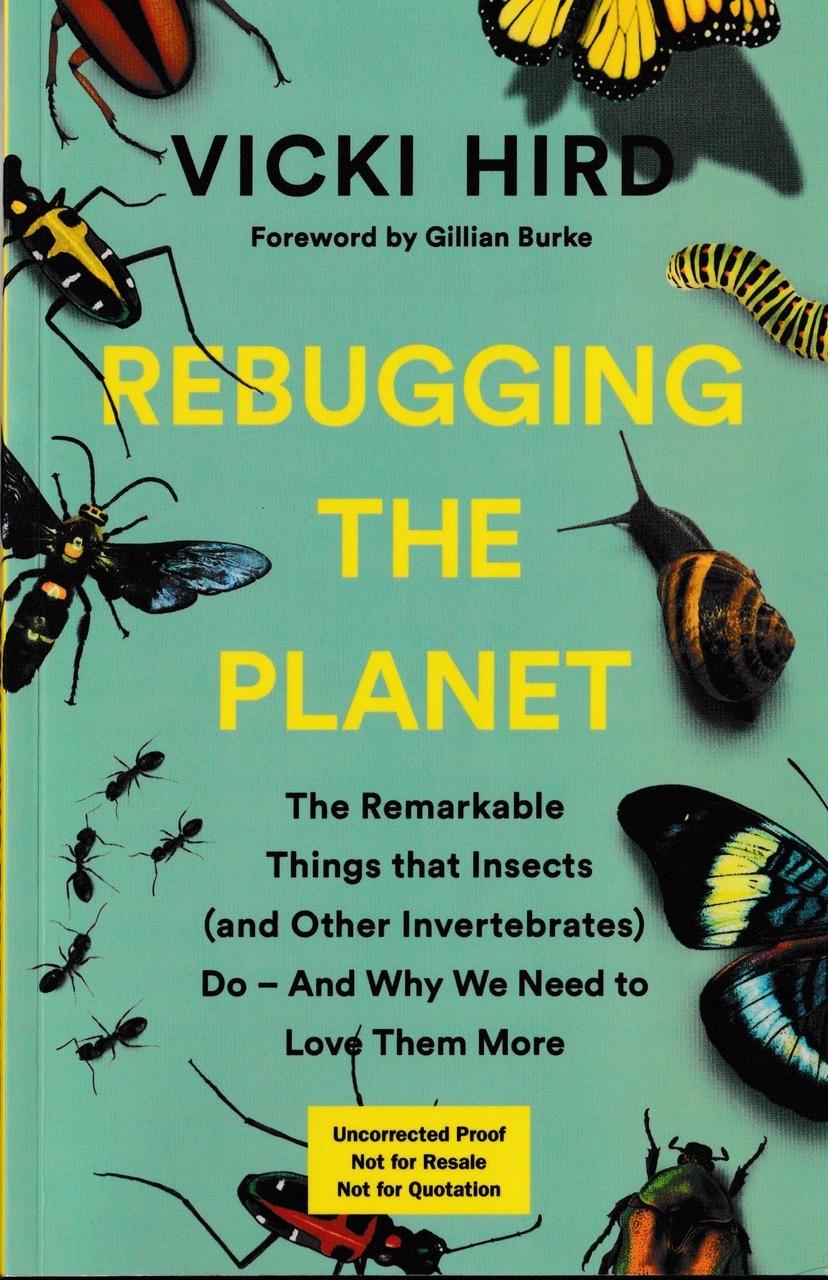Conservation Outreach & science communication
Vicki Hird with foreward by Gillian Burke
Chelsea Green Publishing
2021
ISBN: 9781645020189
Reviewed by Peter Smithers
This is a heartfelt plea from Vicki Hird to change the way we interact with the natural world, but it is a plea with a difference, one that presents its arguments via the lens of globally declining invertebrate populations. It is a manifesto for a green revolution aimed at the layman, a tool kit to enable individuals to make changes to the way that they live, and offers advice on how to put pressure on various layers of society, from friends and neighbours to local politicians and national government, in order to bring about a greener, more diverse world.
The book begins by examining the global decline in invertebrate populations and discusses some of the causes. It also looks at human attitudes to invertebrates, asking why they are negative and how we can alter them. Subsequent chapters explain all the good things that invertebrates contribute to the biosphere, then offer an outline of the aims and practices of rewilding before examining the role that parks and other community open spaces can play in promoting local biodiversity. In chapter 5, Vicki addresses the big issues of our day: climate change;soil degradation; chemical, plastic, light, and noise pollution; and the impact of invasive species. The next chapter explores food production and consumption, examining the impacts of intensive farming, the pressures exerted by supermarkets and other elements of the food supply chain and the role that the consumer has via their choices in moving food production and supply towards sustainability.The following chapter delves into the world of politics, an arena that Vicki knows well from her work as a campaigner and lobbyist. Here she asks who it is that holds the power to make the changes that are required. Agrochemical companies promote their products, dominating the way food is produced while large multinationals monopolise the food markets. Can governments alter the balance of power to implement a greener agenda? Poverty and inequality are also identified as key drivers of biodiversity loss and the degradation of natural systems. The penultimate chapter offers a view of the world as it could be if many of the ideas in the book were implemented.The final chapter,“You don’t have to rebug alone”, offers advice on how to lobby and an extensive list of resources and organisations that can help and support individuals to initiate change.
Throughout the book, key ideas are referenced to a ‘Notes’ section at the rear of the volume. Following chapters 3 to 7 are boxes that offer suggested actions that can implement the ideas covered in the chapter. These range from simple changes in attitude to the organisation of more interventionist actions. Also scattered among the text are other boxes that offer an insight into the incredible world of insect biology. These fascinating glimpses of invertebrate behaviour and ingenuity provide a counterpoint that can alter attitudes and persuade readers that invertebrates have their own discreet charm.
Vicki is not alone in making this call for change, but she is unique in her down-to-earth approach, and in offering the wide range of suggested actions from simple changes in lifestyle and consumer choices to becoming an activist, all of which can be undertaken by anyone who wants to make a difference. ‘Rebugging the Planet’ is an introduction to the complexities of the multiple crises that we currently face. It is an introduction that should spur a new generation into action to build a better world and will enable its readers to appreciate the invertebrates that surround them for what they are, not just what they do for us. It’s an appreciation that will alter their life choices and move them towards a greener, more biodiverse, future. ‘Rebugging the Planet’ is a book for everyone, a manual for change that will be driven by concerned citizens.


